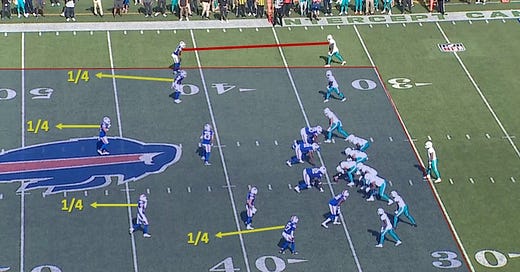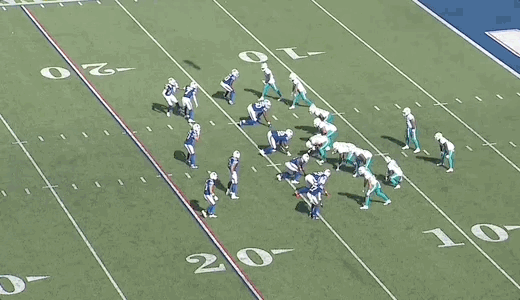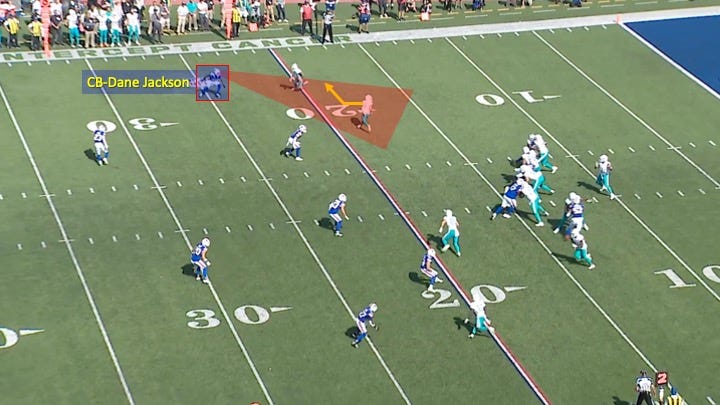I wouldn’t say that the Bills defense shut down the Dolphins on Sunday. They still allowed 6.8 yards per play as well as 5 plays of 20 yards or more. But they did keep Miami from firing on all cylinders. Given how well the Dolphins offense has performed this season, holding them to just 20 points is a major achievement.
One of the things that makes Miami so dangerous is how quickly Tua gets the ball out. That’s often because the play works as designed, his receivers aren’t disrupted (often due to motion), and his first or second read end up being open. When Tua gets a clean picture after the snap and can get rid of the ball at the top of his drop, they are nearly impossible to stop.
In getting the ball out so quickly, though, Tua’s eyes naturally tend to go where the throw will go early in the play.
So one aspect of the Bills approach on Sunday seemed to be that underneath defenders would key on where his eyes looked first and then attack that area aggressively.
Just look at this 3rd-and-3 on Miami’s 4th drive of the game. Focus on slot corner Taron Johnson (#7). Notice how he abandoned his zone and attacked the other side of the field after reading Tua:
Had that ball not been thrown behind the intended receiver, Johnson would have been there to break up the pass. You can also see that Tua had an open receiver in the abandoned zone behind Johnson if he looked back in that direction.
The other key part of the Bills approach centered around their coverage choices. They played zone on roughly 75% of Miami’s pass plays (according to PFF data), which is roughly in line with what they’ve done all season. Most of that was with a 2-safety shell. The goal was to keep the passing game in front of them.
More importantly, however, they used lots of disguise and mixed their coverages to disrupt the timing and rhythm of the passing game. Sometimes this would lead to Tua throwing the ball to covered receivers, which limited yards after the catch or led to incompletions. Sometimes, it would force indecision, which made Tua hold onto the ball longer. The longer he has to hold the ball the less special this passing game is and the more impactful the pass rush can be. This approach helped Buffalo get to Tua for 4 sacks on Sunday after he’d been sacked just once in his first 3 games.
Below are several examples of the coverage choices and disguise Buffalo used successfully against Miami throughout the afternoon.
On this 2nd-and-15 in the second quarter, the Bills would play cover-4 “palms” to the 2-receiver side of the formation. This meant the coverage would look like quarters initially:
One of the soft spots in quarters coverage is the flat. However, in palms coverage, the cornerback to the two-receiver side reads the slot receiver’s route at the snap. If he breaks to the outside within 6 yards of the line of scrimmage, as Braxton Berrios did on this play, the cornerback takes him:
Tua threw this ball thinking he’d have the flat open based on the quarters look. But cornerback Dane Jackson did a great job of selling quarters coverage with his drop, reading the route concept, and then breaking on Berrios:






